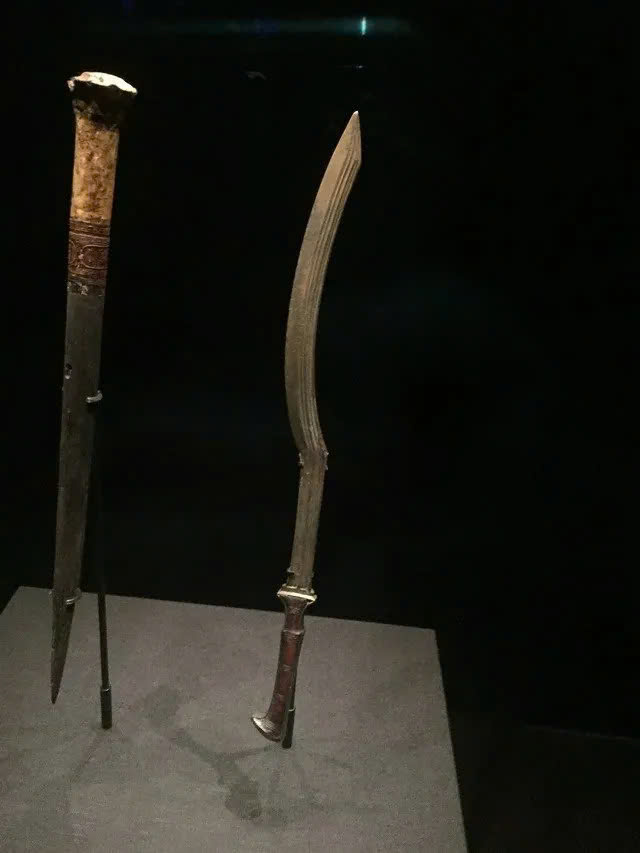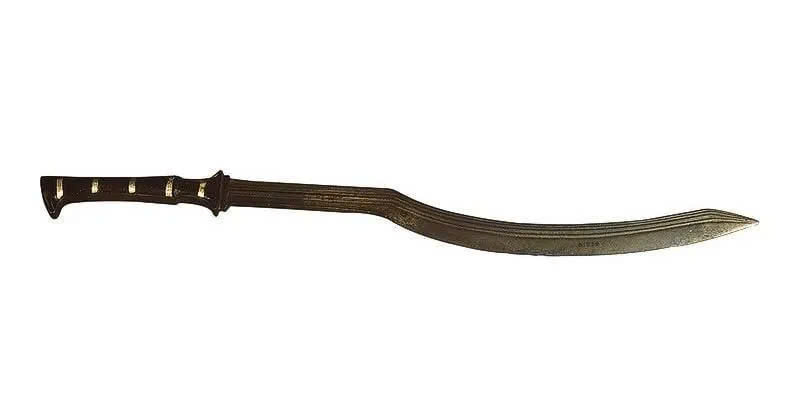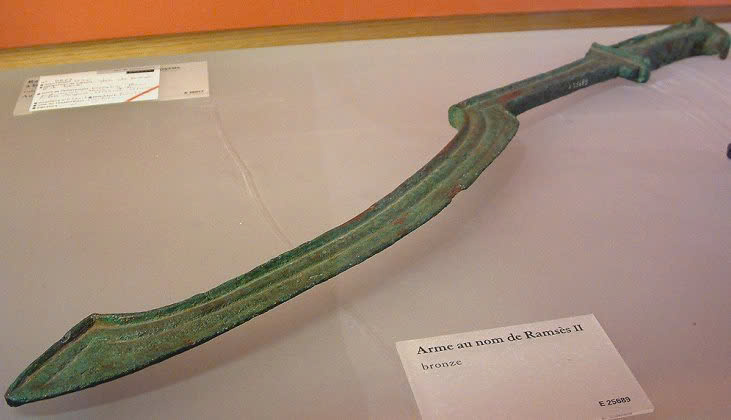Unveiling the Ancient Egyptian Warrior King’s Ceremonial Sword

In the heart of ancient Egypt, a weapon of unparalleled beauty and significance lay hidden for millennia. Discovered in the tomb of the boy king Tutankhamun, this bronze khopesh sword stands as a testament to the craftsmanship and symbolism of the 18th Dynasty.
A Blade Divided: The Anatomy of Tutankhamun’s Khopesh

The khopesh of Tutankhamun is a masterpiece of ancient metalworking, crafted from a single piece of bronze. Its design is tripartite:
- A black ebony hilt, providing a stark contrast to the gleaming metal
- A straight blade section adorned with an engraved lotus flower and its elongated stem
- A curved tip, etched with a long stripe, giving the weapon its distinctive sickle-like shape
At 59.5 cm long and 2.3 cm wide, this khopesh is a formidable weapon, its curved edge designed for both slashing and trapping an opponent’s shield or limb.
More Than a Weapon: Symbol of Royal Power
While practical in design, Tutankhamun’s khopesh likely served a ceremonial purpose. Its ornate appearance mirrors the sword depicted in the king’s hand on a gilded wooden shield found within the same tomb. This connection underscores the khopesh’s dual role as both a weapon and a symbol of royal authority in ancient Egyptian culture.
The Rise and Fall of an Iconic Blade
Born in the Bronze Age, the khopesh evolved from battle axes to become a signature weapon of ancient Egyptian warfare. Its unique shape made it highly effective in close combat, earning it a place of honor in the military arsenals of the time.

However, like all great weapons, the khopesh eventually gave way to newer designs. As the longsword rose to prominence, the curved blade of the khopesh faded into history—but not before leaving an indelible mark on Egypt’s military legacy.
A Window into Ancient Egypt
The discovery of Tutankhamun’s khopesh in the Valley of the Kings has provided invaluable insights into ancient Egyptian weaponry, craftsmanship, and royal symbolism. Now housed in the Egyptian Museum in Cairo (JE 61588), this remarkable artifact continues to captivate historians and enthusiasts alike, offering a tangible link to the warrior kings of Egypt’s glorious past.

As we marvel at this bronze masterpiece from the reign of Tutankhamun (ca. 1332-1323 BC), we are reminded of the enduring allure of ancient Egypt—a civilization where art, power, and warfare intertwined to create objects of timeless beauty and historical significance.
